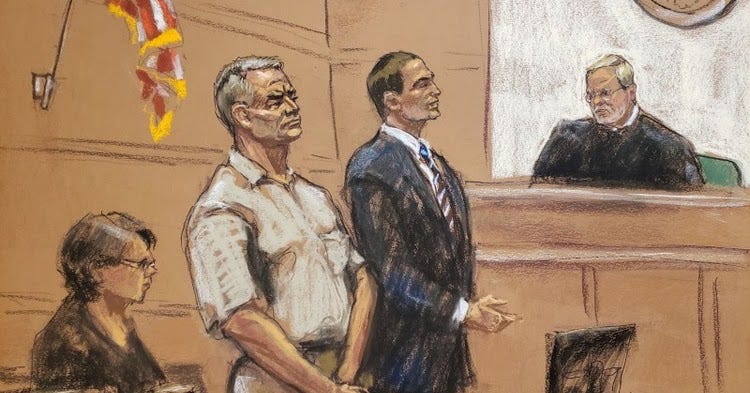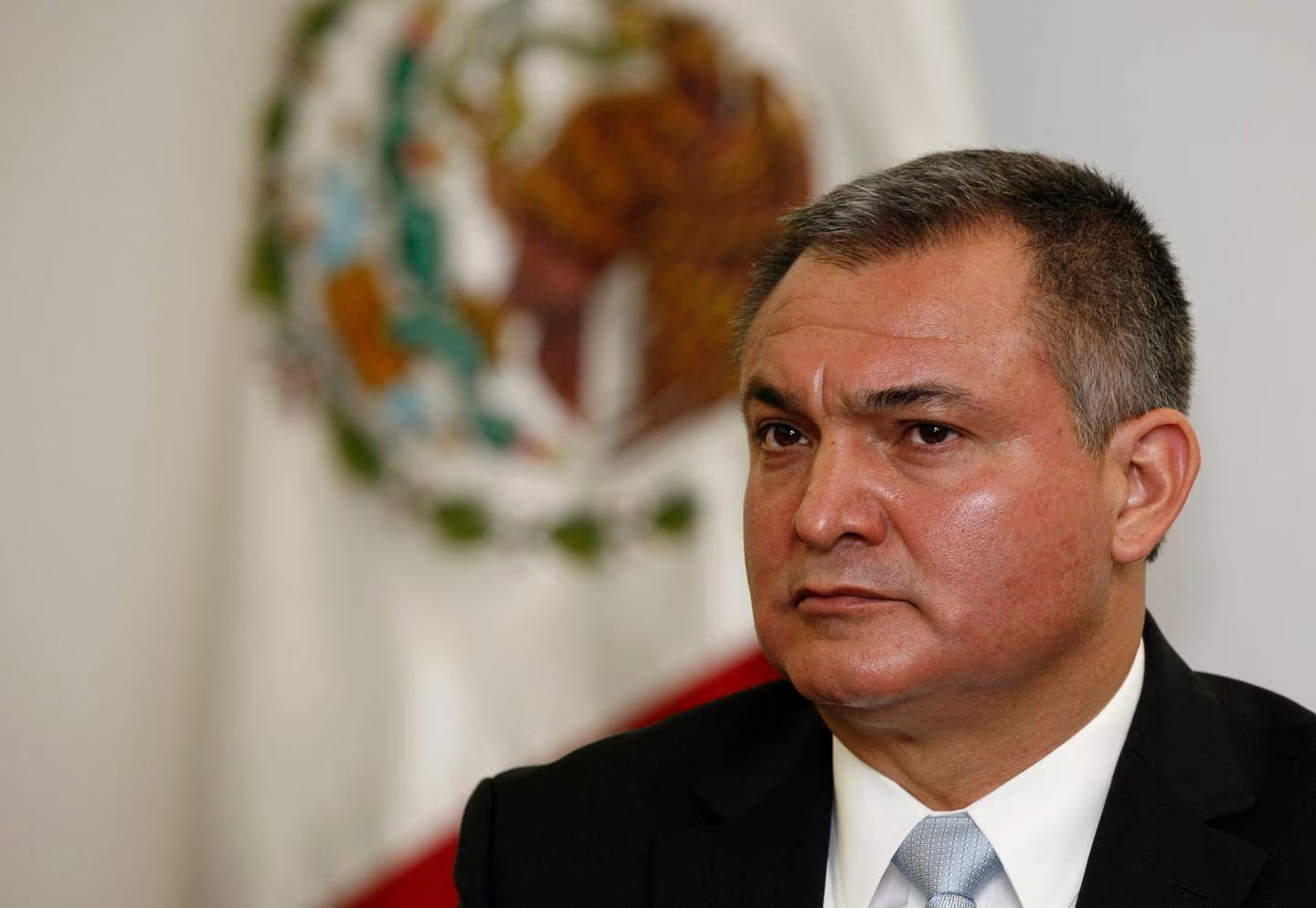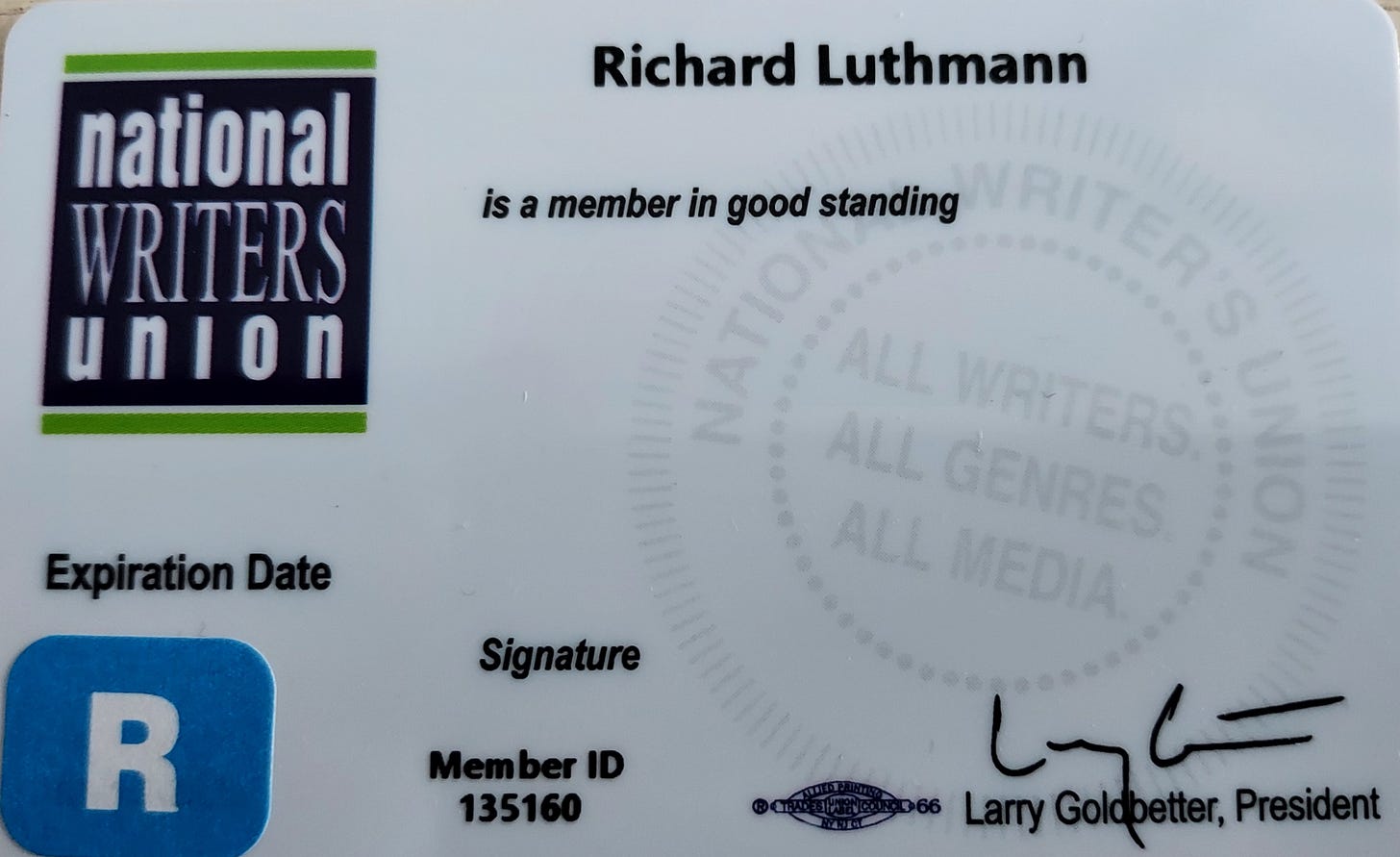"Because of Their Relationship with El Chapo and the Cartels, Who Knows Who They Might Try to Silence"
Richard Luthmann on Milenio TV: EDNY Genaro García Luna Case Part 2
Richard Luthmann provided commentary on Milenio TV, one of Mexico’s most prominent media outlets, on the trial of former Mexican Secretary of Public Security Genaro García Luna.
Prosecutors say Genaro García Luna took millions of dollars from Joaquín “El Chapo” Guzman’s Sinaloa drug cartel to allow the group to operate in Mexico.
Jury selection was completed this past Thursday in Brooklyn Federal Court. The trial begins on Monday, January 23, 2023, before US District Court Judge Brian Cogan in the Eastern District of New York.
Luthmann described the harsh conditions García Luna faces at his trial. In this segment, Luthmann talks about American bail laws and some of the reasons why Genaro García Luna was remanded to Pretrial Detention in the custody of the Federal Bureau of Prisons (BOP) and is being held at the notorious Metropolitan Detention Center (MDC) in Sunset Park, Brooklyn, New York.
García Luna, 54, served as public security chief during the administration of President Felipe Calderon between 2006 and 2012. Before that, he led the Federal Investigation Agency from 2001 to 2006.
The former security chief, arrested in 2019 in the US, has pleaded not guilty. Since his arrest, García Luna has been remanded and remains warehoused at the Brooklyn MDC.
The Charges Against García Luna
Prosecutors allege the former head of the Mexican equivalent of the US Federal Bureau of Investigations accepted millions of dollars stuffed in briefcases and delivered by cartel members.
They say García Luna was involved in “the importation and the distribution of massive quantities of dangerous drugs” into the US.
The ex-minister - considered the architect of Mexico’s war on drugs - is also accused of sharing information with the Sinaloa drug cartel about its rivals and warning it about law enforcement operations.
Allegations about García Luna’s involvement with the Sinaloa cartel came to light during the trial of “El Chapo” Guzmán, who was convicted and sentenced to life in prison plus 30 years in 2019.
During the trial, former cartel member Jesus “Rey” Zambada testified that he had delivered millions of dollars in payments to García Luna.
García Luna called the testimony “lies, defamation, and perjury.”
He faces anywhere from 10 years to life in prison if found guilty. The trial is expected to last several months.
García Luna Was Remanded Without Bail to the Brooklyn MDC
Luthmann, a former attorney and former prisoner at the Brooklyn MDC, said García Luna faces exceptionally harsh conditions during the trial.
García Luna’s chances at his upcoming trial are substantially diminished because he was not granted bail. The daily conditions he faces at the Brooklyn MDC are deplorable. Luthmann argues the DOJ intentionally allows these harsh conditions to propagate:
DOJ Uses Brooklyn MDC to Torture Defendants Into Plea Deals
The Presumption of Innocence

Milenio TV Journalist Alejandro Domínguez asked Richard Luthmann whether García Luna should face the punishing conditions at the Brooklyn MDC and travel to and from the Brooklyn Federal Court before a jury finds a guilty verdict. Here is how Luthmann responded:
There is a huge part of American law, which is the presumption of innocence: innocent until proven guilty.
There is also a big tension here in American law which is related to bail and preventative detention. In 1984, the Congress enacted the Bail Reform Act, which allows for the Federal Prosecutor to ask the Judge to hold someone preventatively prior to a trial because they believe them to either be a flight risk or a danger to society, to the community, or any person.
In this case, they obviously said García Luna would be a flight risk because he was not a US person, he would probably leave the jurisdiction, and he may never come back. So they were able to bring him in and keep him.
Also, they made claims of potential dangerousness because of the relationship to El Chapo, and relationship to the cartels.
Who knows who they might try to silence, and who knows what might happen with the amounts of money at issue?
I was in the prison in Brooklyn MDC, while El Chapo was in custody at the MCC across the river in Manhattan. There were still strict security protocols in the other prison, the MDC, because El Chapo was that big.
DOJ were worried that El Chapo was going to get to BOP guards or US Marshals or be able to bribe people. So they had all the prisoners on lockdown whenever El Chapo was going to court, just to make sure that there was no extra commotion.
A case like this is high stakes for the United States Government, and so they are going to pull out all the stops to try to ensure there's nothing that affects what's going on. There's no way that García Luna will not face the law. That's a big part of what's happening here.

Milenio TV Journalist Alejandro Domínguez further asked Luthmann whether he had heard about García Luna or had any interaction with him:
García Luna was remanded in December 2019. By early 2020, I had been transferred to Allenwood Prison in Pennsylvania. We overlapped maybe for about a month or two.
But I had no personal interaction with García Luna because when he first got up to the NBC, they had him in protective custody in the Special Housing Unit (SHU), which is a unit where it's like solitary confinement.
García Luna was in that unit for his ownprotection because the DOJ were worried that someone might try to take a run at him, or someone might try to get rid of him. There might be some type of prison hit given the relationship of all the powerful people that are involved.
They eventually loosened up his security protocols and they allowed him to go onto a regular unit. These units have 120 prisoners in them. The vast majority of those prisoners are pretrial prisoners that can't make bail. The judges remand them into the custody of the Bureau of Prisons to stay at the Brooklyn MDC pending their case.
Many of the people there are gang members in New York. You have the Bloods and the Crips, and you have MS-13 and the Latin Kings. You have a lot of drug dealing gangs and violent gangs.
Most of those individuals are remanded, as well as some of the Mafia- the Italian Mafia, the Russian Mafia, the Albanian Mafia, and some Mexican Mafia, as well. Those are a lot of the individuals that you'll find in the MDC Brooklyn jail.
Also, you will find a few white-collar detainees with large fraud cases. You will also find other individuals with all different, run of the mill types of extortions or any type of violent case, where they may have had a criminal history. If they've been in prison before, there is a good chance that they get remanded.
So there's a mixed bag of people García Luna could be with. There is a large number of Spanish-speaking people, so he would have plenty of people to talk to. But there are also a lot of American people in the prison as well.
Milenio TV Journalist Alejandro Domínguez further asked Luthmann whether García Luna would have a chance to interact with family members inside the courtroom. Here is Luthmann’s response:
The courtroom is controlled by the Judge. To the extent the Judge may permit family interaction, that's when it would happen.
There is a bit of discretion to the US Courts Security Service and the US Marshals, but most of the time they do not allow interaction with families.
There are some judges that will allow family members to come sit next to their loved one, the defendant, at certain points, particulatly while the jury may not present, or allow them to go and embrace for a moment.
My judge, when I was in the court, was the legendary Jack B. Weinstein. He since passed away. But he was well knownfor that type of compassion, for allowing defendants to sit next to their family members, talk to their family members.
But everything would be public, inside the courtroom. There would not be a private accommodation. They just usually don't allow it. The security concerns are far too great. The worry is that some type of improper information, materials,or contraband might be slipped to the defendant.
There are a visiting procedure at the Brooklyn MDC. And that is a rather onerous procedure. It takes at least an hour to get into the building. Visitors go through several levels of security, metal detectors, pat downs, and other screening measures.
That would be probably the only way an individual in García Luna’s family could go see him. The lawyers would be able to see him and talk to him, but that's about it.
Richard Luthmann, an investigative journalist, writer for the Frank Report (www.frankreport.com), and National Writers Union member, regularly writes and speaks on issues facing inmates and prisoners.
Luthmann has previously discussed the abusive conditions faced by NXIVM Leader Keith Raniere when he faced trial in the EDNY on sex trafficking and related charges. Explore those submissions here:






